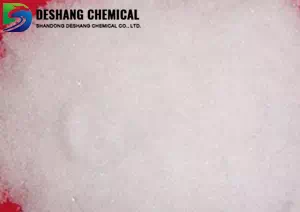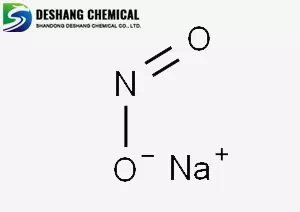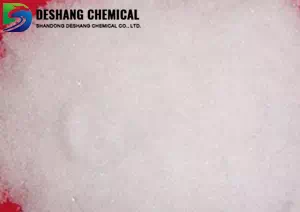All Categories



sodium nitrite CAS 7632-00-0, sodium nitrite, CAS 7632-00-0
Sodium nitrite CAS 7632-00-0 chemical formula is NaNO2, in which the oxidation number of nitrogen is +Ⅲ. Colorless or yellow crystals, with a relative density of 2.168 at 0℃, a melting point of 271℃, and decomposes at 320℃.
CAS : 7632-00-0
Formula : NaNO2
Mol. wt. : 69
EINECS : 231-555-9
| CAS | 7632-00-0 |
| Molecular formula | NaNO2 |
| Molecular weight | 69 |
| EIENCS | 231-555-9 |
| Form | Powder |
| Melting point | 271 °C (lit.) |
| boling point | 320 °C |
| Density | 2.17g/cm3 |
| Solubility | Acid aqueous solution: 1-2μl of acetic acid is soluble per milliliter of H2O |
| PKA | / |
| Color | White or colorless |
| Storage temp | 2-8°C |
The chemical formula is NaNO2, in which the oxidation number of nitrogen is +Ⅲ. Colorless or yellow crystals, with a relative density of 2.168 at 0℃, a melting point of 271℃, and decomposes at 320℃. It is readily soluble in water, and its aqueous solution is alkaline due to the hydrolysis of nitrite ions. Sodium nitrite has both oxidizing and reducing properties, with oxidizing being the dominant one. In acidic solutions, it mainly exhibits oxidizing properties, while in alkaline solutions or when exposed to strong oxidants, it shows reducing properties. Friction or impact with sulfur, phosphorus, organic substances, etc. can cause combustion or explosion. Sodium nitrite can react with the oxygen in the air to gradually form sodium nitrate: NaNO2+1/2O2=NaNO3. When a sodium nitrite solution is acidified with a strong acid, nitrite is produced. Nitrite is very unstable and readily decomposes into nitrogen dioxide, nitric oxide and water. Both the nitrogen and oxygen atoms in nitrite have lone pairs of electrons and the ability to form coordination bonds. Therefore, nitrite can act as a ligand and form coordination compounds with many metal ions. Sodium nitrite is toxic and a carcinogen. Extra caution must be exercised when using it. It is widely used in the dyeing and printing industry and organic synthesis. Sodium nitrite is produced by heating sodium nitrate with lead: NaNO3+Pb=NaNO2+PbO. The mixture obtained after the reaction is treated with hot water, filtered to remove insoluble lead oxide, concentrated and crystallized, and sodium nitrite crystals can be obtained.
● It is used as a color-fixing agent in meat product processing
● It is used as a common analytical reagent, oxidant and diazotization reagent, and is also used in the synthesis of nitrite and nitroso compounds
● It is used as a mordant, bleaching agent, metal heat treatment agent, electroplating corrosion inhibitor, and in medicine as a disinfectant and preservative for instruments, etc
● It is used as a mordant, bleaching agent, metal heat treatment agent, electroplating corrosion inhibitor, and in medicine as a disinfectant and preservative for instruments
● It is used in the production of ice dyeing dyes, sulfur dyes, direct dyes, acid dyes, disperse dyes, basic dyes, auxiliaries and H pore-developing agents. It is also used in the production of intermediates such as amino-azobenzene and para-aminophenol. It is also used in the production of organic pigments, such as Silver Pearl R, Bright Red, Bright Red Powder, Candle Red, toluidine Purple Red, Scarlet Lake, Lisol Red, Purple Sauce Lake CK, etc. The pharmaceutical industry uses it to manufacture pyrimidine, aminopyrine, etc. Used for the production of vanillin. Used for bleaching silk and linen. Mordant for fabric dyeing. It is also used as a corrosion inhibitor in metal heat treatment and electroplating. Used for cutting oil, lubricating oil, antifreeze and hydraulic systems.
● Sodium nitrite is a color developer permitted for use in China. Under the action of lactic acid contained in the meat, it releases nitrite, which then decomposes into nitroso (N-0). The latter can react with myoglobin to form bright red nitroso myoglobin, playing a role in color protection and creating a special flavor. Sodium nitrite can also inhibit a variety of anaerobic Clostridium, especially having a special inhibitory effect on Clostridium botulinum. In China, it is stipulated that it can be used for pickling canned meat of livestock and poultry and meat products, with a maximum usage of 0.15g/kg. The residual amount (calculated as sodium nitrite) for meat products shall not exceed 0.03g/kg. For salted ham, the residual amount is 0.07g/kg. It can also be used in canned meat, but shall not exceed 0.05g/kg.
● It is used as a color-fixing agent in meat product processing and can be applied to meat cans and meat products. It has a certain effect on inhibiting the proliferation of microorganisms in meat products (with a special inhibitory effect on Clostridium botulinum), and can enhance the flavor of cured meat. It can be used as a preservative.
● Meat color fixative Antimicrobial agent; Preservative. In Japan, it can be used in meat products such as canned meat, ham, sausages, bacon, and salted beef. Ascorbic acid, isoascorbic acid, cysteine, nicotinamide and other substances can be used as color-developing AIDS. Reference dosage
Toxicity classification: Highly toxic
Acute toxicity: Oral - rat LD50:85 mg/kg; Oral administration - mouse LD50 175 milligrams per kilogram
Stimulation data: Eyes - Rabbits 500 mg mild
Explosive hazardous characteristics: It can explode when mixed with reducing agents, sulfur and phosphorus, and exposed to heat, impact or friction
Flammability hazard characteristics: High heat decomposition of toxic nitrogen oxides and sodium oxide fumes
Storage and transportation characteristics: The warehouse is well-ventilated, low-temperature and dry. Store separately from organic matter, reducing agents, flammable substances such as sulfur and phosphorus, and food raw materials
* Prompt reply and 24 hours online, professional team to provide best price and high quality product.
* Sample testing support.
* Every batch of products will be tested to ensureits quality.
*The packing also can be according the customers` requirment.
*Any inquiries will be replied within 24 hours.
*we provide Commerical Invoice, Packing List, Bill of loading, COA , Health certificate and Origin certificate. If your markets have any special requirements, let us know.